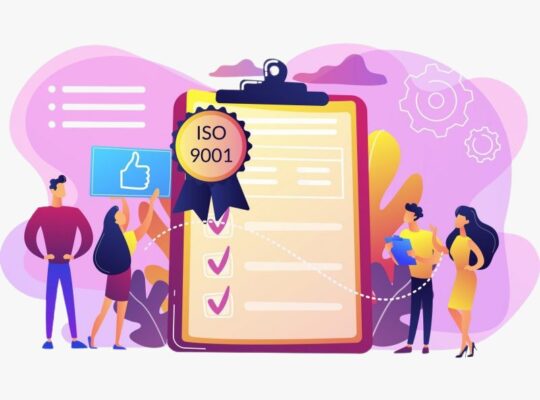The admissions process is the most important element of each academic year in any educational institution. It is a process that moulds an institution’s future and accomplishments. Reaching out to the largest number of students, motivating them to participate in the process, and identifying the best candidates are all critical components of a successful admissions process. When it comes to enrolling potential students, many higher education institutions are experiencing new obstacles. Unlike in the past, when college fairs and campus tours were the norm, today’s school recruitment is conducted entirely online. Having a solid marketing strategy is now a requirement. Attracting the attention of potential students, teaching them about the programme, and removing barriers to enrollment are all part of an educational marketing approach. The most successful are visible and offer an environment that encourages both parties to connect (conversation and information sharing).
There are several approaches that might be used nowadays. You’ll find the ones that can be customised to any educational institution and still provide excellent outcomes in this blog:
1. Social Media
For news, inspiration, research, and even opinions, today’s students rely on their social media. So, you must carry your tales to where your target audience is. Also, keep in mind that employing effective social media methods will only ensure that your prospective students are always connected with your institution. Examine what would work best for your institution. In terms of interaction, videos have been shown to be the most effective on social media. You may pay professionals to make professional videos for your institute, campus, students, and professors, which you could then advertise on social media. Daily activities, cultural festivals, and influencer — who might visit your institute for special events — interviews might all be captured. These things entice students to come to the institute and keep them motivated.
2. Websites
When a student adds your institution to their list of potential colleges or applies for undergraduate admission, they will frequently visit your website to learn more. A well-thought-out website, both in terms of structure and content, may have a significant impact on the students’ ultimate selection. For your prospects, your website acts as a virtual campus tour. When you create a website that answers their queries, you improve the likelihood that they will choose your institute. A clear navigation pattern, fast-loading websites, and mobile responsiveness are all examples of this.
3. Engagement Strategies
Your candidates come from many walks of life and have a variety of viewpoints. Keeping this in mind, your engagement strategy should be adaptable. Millennials and Gen-Z have grown up in a digital environment where everyone wants to offer them something. They’re quite good at deciphering the meaning of communications sent their way. In the midst of all the noise, students seek out something that is unique to them and can add value to their lives. Furthermore, you must recognise that not everyone has the same requirements. You must include in your plan the requirement to segment your incoming applications or queries based on their enrollment funnel level. Check their background information, such as location, language preferences, engagement sources, financial assistance information, and so on, in groups with candidates at the same level.
4. Provide information relevant to the students
Many uncertainties and difficulties develop in the minds of students prior to beginning the admissions process. Doubts might arise about which course is best for them, course structure, and employment and higher education options. At this point, if an institution is capable of effectively resolving students’ problems, more students will find the institution desirable to them; they will be more interested in enrolling in the institute, as well as referring it to their friends. You could appoint the following ways to implement the plan:
- Publishing articles about the institution, courses, and its scope.
- Creating video contents of various events held.
- Hosting Webinars.
- Providing admission counseling.
5. Conducting Aptitude Tests Free of Cost
Conducting a free aptitude exam will be beneficial to both the students and the institution. Aptitude exams and follow-up coaching assist students in identifying their strengths and areas for growth. The school will also have a clear image of the course that best suits a student’s needs. Many students will participate in such events since it will tremendously assist them in choosing the best higher education decision possible. The test may be taken remotely utilising several Online Examination platforms, allowing students to take the test from anywhere using their mobile phones, tablets, or computers.
6. Alumni as the Light Bearers of the Campaign
Alumni may always serve as ambassadors for their alma maters throughout the admissions process. Recruiting alumni volunteers to assist with admissions counselling and webinars, alumni may provide a wealth of information and experience from their time in college and beyond graduation, which will tremendously benefit the viewpoint. Engaging alumni in the admissions process will bring more authenticity to the process as well as increase the likelihood of hearing from them.
7. Sharing Success Stories
Students can learn about an institution’s success stories to get a sense of the quality of education and possibilities available on campus. Various professional venues, such as LinkedIn and other social media, may be used to share success stories with students.
8. Email Campaign
Email marketing allows you to reach out directly to your prospects’ inboxes. Given that the typical individual reads their email 15 times per day, this strategy offers lots of chances to contact with students and discuss what your institution has to offer. To ensure that your emails aren’t buried in the inboxes of potential students, send them at a time when those are most likely to be opened. Emails sent earlier in the week usually have a greater open rate than those sent later in the week. However, the only way to be certain is to conduct a test with your own audience.
But This Isn’t All
In the long run, it’s also vital to ensure student involvement once they’ve joined. Technology has already ingrained itself in our daily lives. It goes without saying that the next generation of students wants technology to transform their education. So, in addition to quality assurance and learning methodologies implementation, strive to include technology into education so that teachers can conveniently administer courses and students can have a better learning experience.

About the Author: Nishtha Gupta
Nishtha Gupta is a student of English Literature at Jamia Millia Islamia and currently based in New Delhi. She is extremely passionate about writing on technological advancements in the field of education. She also writes poetry and fiction. Nishtha has an e-book published with Amazon’s Kindle. Her other interests include music, reading and dancing. She wishes to pursue her career in the field of publishing.
This article has been re-published on Medium




